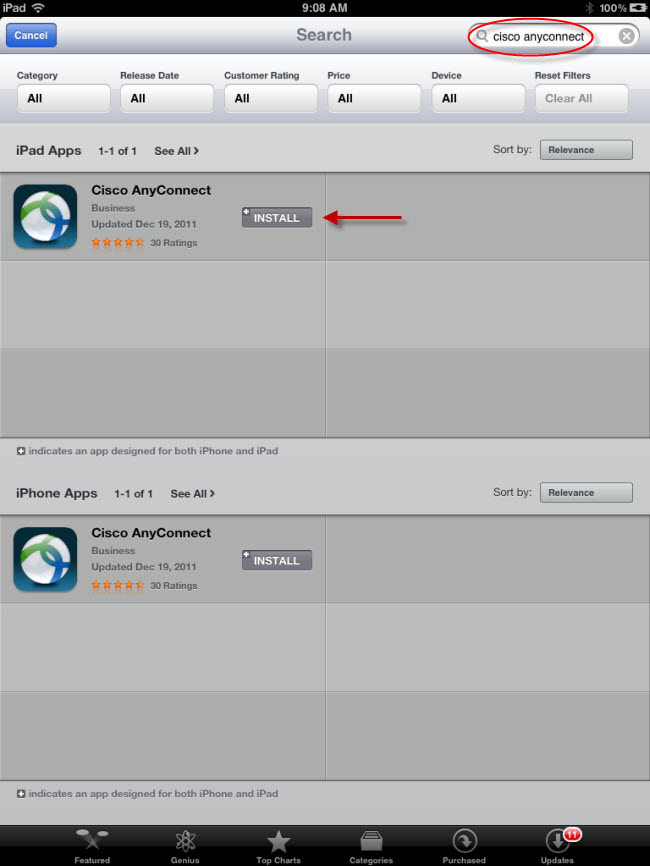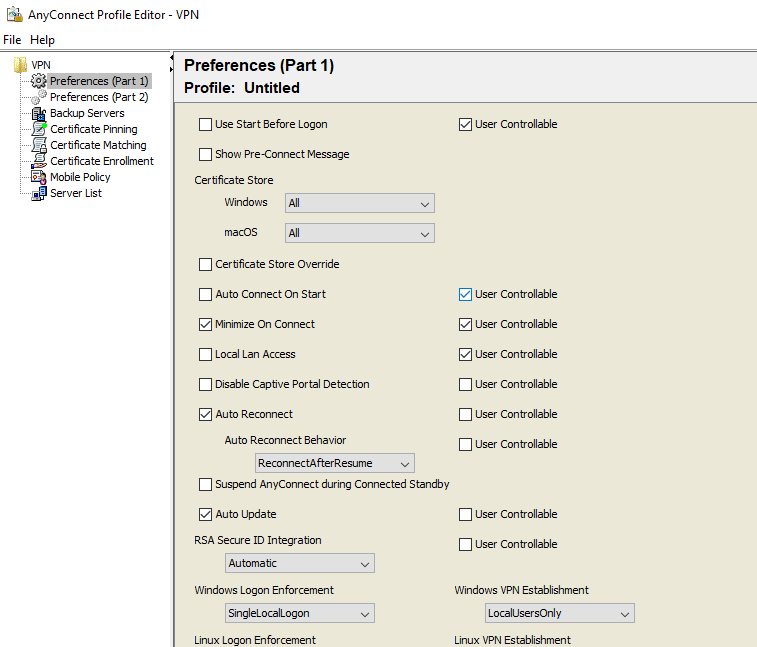Overview
AnyConnect version 4.4 is compatible with these operating systems and requirements: Windows, Mac, Android and iPhone. Is there a better alternative? Cisco AnyConnect is an unbeatable provider of cybersecurity. But, creating your best work often needs strong, reliable and fast WiFI. With IPVanish, you can get the best of both worlds. I have been using the Cisco AnyConnect as my primary VPN Client for the past few months. The simple view of the client is really impressive and productive. Whenever I want to connect to my VPN host I will type my VPN host address in the text of VPN client and click connect. APPLICATION DESCRIPTION: AnyConnect for Kindle Fire HD provides reliable and easy-to-deploy encrypted network connectivity from Kindle Fire HDs and new (2012) Kindle Fires to Cisco VPN head-ends (including Cisco ASA 5500 Security Appliances)by delivering persistent corporate access for users on the go. Whether providing access to business email, a virtual desktop session, or most other Kindle. This offering provides installers for Cisco AnyConnect Secure Mobility Client version 4.9.04053 for Windows, MacOS, and Linux. Mobile Apps are available for iOS (iPhones and iPads) on the Apple App Store and for Android on the Google Play Store. Operating Systems supported: Microsoft Windows (Windows 7 SP1, 8, 8.1, 10 x86(32-bit) and x64(64-bit). Cisco AnyConnect Installation fails on Win 10 I am running Win 10, Version 1803, OS Build 17134.112 For some reason I am not able to install Cisco Any Connect, vers.
Stanford's VPN allows you to connect to Stanford's network as if you were on campus, making access to restricted services possible. To connect to the VPN from your Windows computer you need to install the Cisco AnyConnect VPN client.
Ditto clipboard for mac. Two types of VPN are available: Emperor battle for dune mac. Intel parallel studio for mac.

Anyconnect 4.7 Download Windows
- Default Stanford (split-tunnel). When using Stanford's VPN from home, we generally recommend using the Default Stanford split-tunnel VPN. This routes and encrypts all traffic going to Stanford sites and systems through the Stanford network as if you were on campus. All non-Stanford traffic proceeds to its destination directly.
- Full Traffic (non-split-tunnel). This encrypts all internet traffic from your computer but may inadvertently block you from using resources on your local network, such as a networked printer at home. If you are traveling or using wi-fi in an untrusted location like a coffee shop or hotel, you may wish to encrypt all of your internet traffic through the Full Traffic non-split-tunnel VPN to provide an additional layer of security.
You can select the type of VPN you want to use each time you connect to the Stanford Public VPN.
Install the VPN client
- Download the Cisco AnyConnect VPN for Windows installer.
- Double-click the InstallAnyConnect.exe file.
- When a message saying the Cisco AnyConnect client has been installed, click OK.
Connect to the Stanford VPN
- Launch the Cisco AnyConnect Secure Mobility Client client.
If you don't see Cisco AnyConnect Secure Mobility Client in the list of programs, navigate to Cisco > Cisco AnyConnect Secure Mobility Client. - When prompted for a VPN, enter su-vpn.stanford.edu and then click Connect.
- Enter the following information and then click OK:
- Group: select Default Stanford split- tunnel (non-Stanford traffic flows normally on an unencrypted internet connection) or Full Traffic non-split-tunnel (all internet traffic flows through the VPN connection)
- Username: your SUNet ID
- Password: your SUNet ID password
- Next, the prompt for two-step authentication displays. Enter a passcode or enter the number that corresponds to another option(in this example, enter 1 to authenticate using Duo Push to an iPad). Then click Continue.
- You may have to scroll down the list to see all of your options.
- If your only registered authentication method is printed list, hardware token, or Google Authenticator, the menu does not display. Enter a passcode in the Answer field and click Continue.
- Click Accept to connect to the Stanford Public VPN service.
- Once the VPN connection is established, a message displays in the lower-right corner of your screen, informing you that you are now connected to the VPN.

Disconnect from the Stanford VPN
Cisco Anyconnect For Windows 10
- In the notification area, click the Cisco AnyConnect icon if it is displayed. Otherwise, go to your list of programs and click Cisco AnyConnect Secure Mobility Client.
- At the prompt, click Disconnect.

